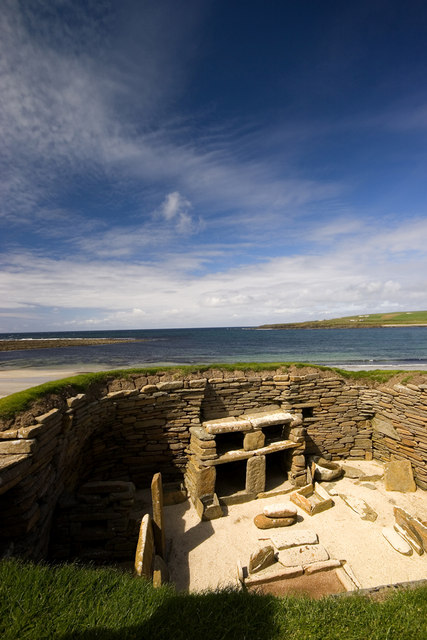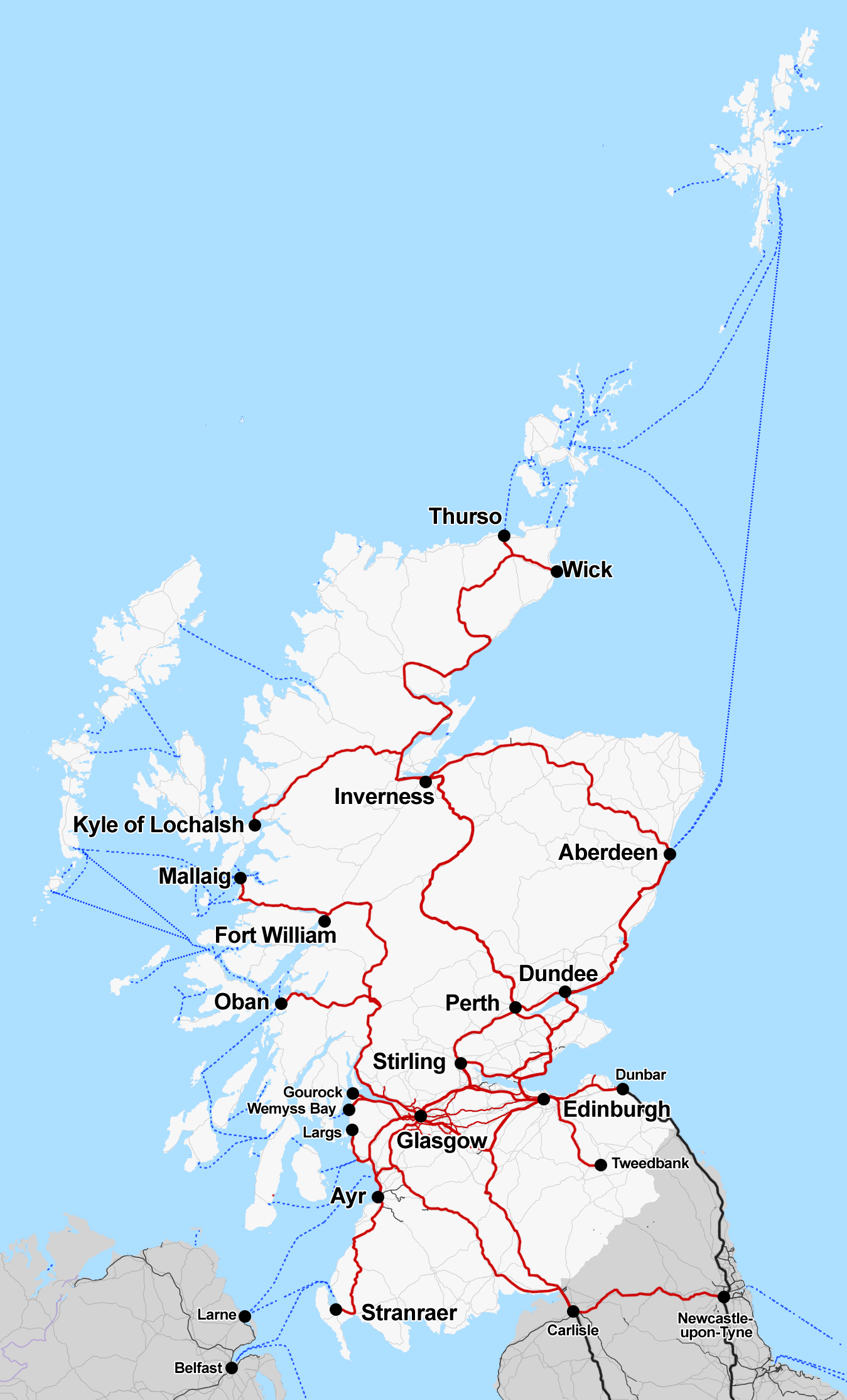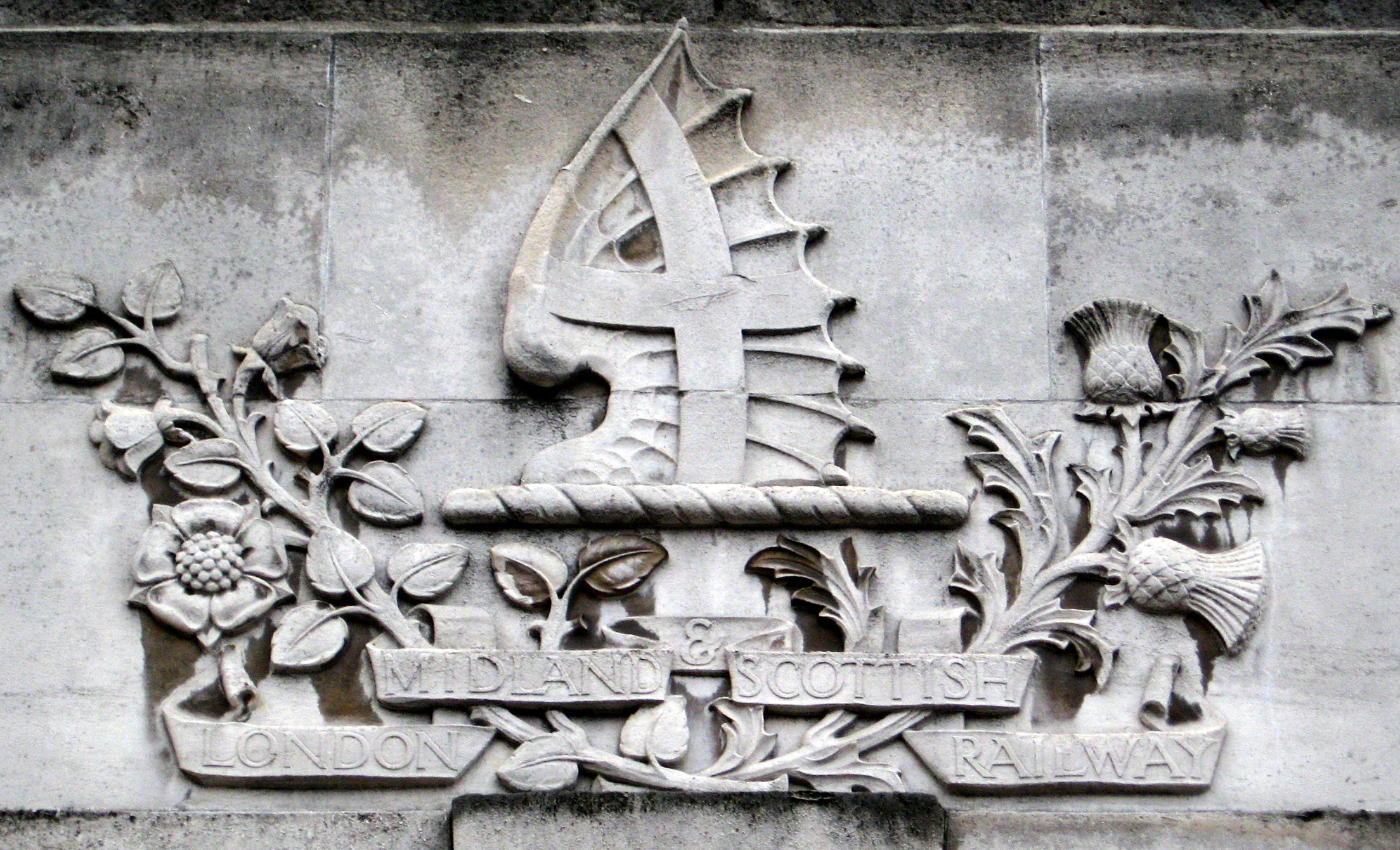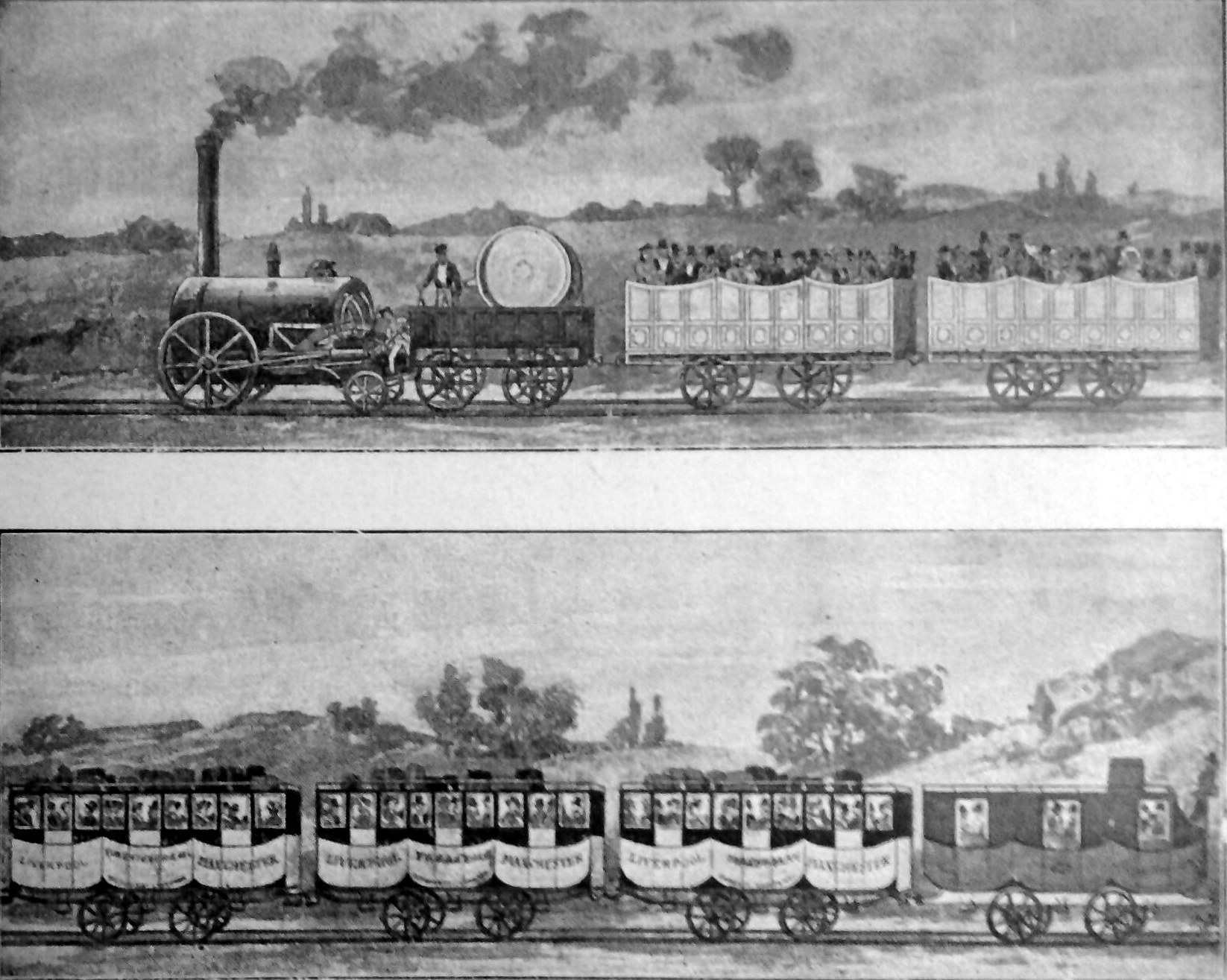|
Kilmarnock And Troon Railway
The Kilmarnock and Troon Railway was an early railway line in Ayrshire, Scotland. It was constructed to bring coal from pits around Kilmarnock to coastal shipping at Troon Harbour, and passengers were carried. It opened in 1812, and was the first railway in Scotland to obtain an authorising Act of Parliament; it would soon also become the first railway in Scotland to use a steam locomotive; the first to carry passengers; and the River Irvine bridge, ''Laigh Milton Viaduct'', is the earliest railway viaduct in Scotland. It was a plateway, using L-shaped iron plates as rails, to carry wagons with flangeless wheels. In 1841, when more modern railways had developed throughout the West of Scotland, the line was converted from a plateway to a railway and realigned in places. The line became part of the Glasgow and South Western Railway system. Much of the original route is part of the present-day Kilmarnock to Barassie railway line, although the extremities of the original line ... [...More Info...] [...Related Items...] OR: [Wikipedia] [Google] [Baidu] |
Scotland
Scotland (, ) is a country that is part of the United Kingdom. Covering the northern third of the island of Great Britain, mainland Scotland has a border with England to the southeast and is otherwise surrounded by the Atlantic Ocean to the north and west, the North Sea to the northeast and east, and the Irish Sea to the south. It also contains more than 790 islands, principally in the archipelagos of the Hebrides and the Northern Isles. Most of the population, including the capital Edinburgh, is concentrated in the Central Belt—the plain between the Scottish Highlands and the Southern Uplands—in the Scottish Lowlands. Scotland is divided into 32 administrative subdivisions or local authorities, known as council areas. Glasgow City is the largest council area in terms of population, with Highland being the largest in terms of area. Limited self-governing power, covering matters such as education, social services and roads and transportation, is devolved from the ... [...More Info...] [...Related Items...] OR: [Wikipedia] [Google] [Baidu] |
John Blenkinsop
John Blenkinsop (1783 – 22 January 1831) was an English mining engineer and an inventor of steam locomotives, who designed the first practical railway locomotive. He was born in Felling, County Durham, the son of a stonemason and was apprenticed to his cousin, Thomas Barnes, a Northumberland coal viewer. From 1808 he became agent to Charles John Brandling, who owned collieries on his Middleton estate near Leeds and whose family came from Felling. From then until his death, Blenkinsop lived at Middleton Hall on Town Street, Middleton, built in the 17th century as the Brandling family's Middleton home (they used the far more modern Middleton Lodge when visiting from their Tyneside homes). Blenkinsop and the Middleton Railway In 1758 the Brandlings had built a wooden wagonway to carry coal into Leeds, using horse-drawn vehicles, now known as the Middleton Railway. Not all the land traversed by the wagonway belonged to Brandling, and it was the first railway to be auth ... [...More Info...] [...Related Items...] OR: [Wikipedia] [Google] [Baidu] |
ScotRail
ScotRail Trains Limited, trading as ScotRail ( gd, Rèile na h-Alba), is a Scottish train operating company that is publicly owned by Scottish Rail Holdings on behalf of the Scottish Government. It has been operating the ScotRail franchise as an operator of last resort since 1 April 2022. History The ScotRail network had since 2015 been operated by the private-sector franchisee Abellio ScotRail. In December 2019, Transport Scotland announced Abellio had not met the performance criteria necessary to have its seven-year franchise extended for a further three years, and the franchise would conclude on 31 March 2022. In March 2021, Transport Scotland announced that the franchise would not be re-tendered for another private-sector operator to run, but would be operated by an operator of last resort owned by the Scottish Government.ScotRail to be Nationalised ''Rail Express'' issue 300 May 2021 page 6 The move was welcomed by the ASLEF, RMT and TSSA unions. The Minister for ... [...More Info...] [...Related Items...] OR: [Wikipedia] [Google] [Baidu] |
Network Rail
Network Rail Limited is the owner (via its subsidiary Network Rail Infrastructure Limited, which was known as Railtrack plc before 2002) and infrastructure manager of most of the railway network in Great Britain. Network Rail is an "arm's length" public body of the Department for Transport with no shareholders, which reinvests its income in the railways. Network Rail's main customers are the private train operating companies (TOCs), responsible for passenger transport, and freight operating companies (FOCs), who provide train services on the infrastructure that the company owns and maintains. Since 1 September 2014, Network Rail has been classified as a "public sector body". To cope with fast-increasing passenger numbers, () Network Rail has been undertaking a £38 billion programme of upgrades to the network, including Crossrail, electrification of lines and upgrading Thameslink. In May 2021, the Government announced its intent to replace Network Rail in 2023 with a n ... [...More Info...] [...Related Items...] OR: [Wikipedia] [Google] [Baidu] |
Glasgow, Barrhead And Kilmarnock Joint Railway
The Glasgow, Barrhead and Kilmarnock Joint Railway was a railway jointly owned by the Caledonian Railway and the Glasgow and South Western Railway, completed in 1873, and giving the latter a shorter access to its Carlisle main line. A branch to Beith was also built. It was formed by extending the earlier independent Glasgow, Barrhead and Neilston Direct Railway, which is also described here; that line was taken over by the joint company. The main line between Glasgow and Kilmarnock continues in operation at the present day. The station at Neilston was closed, and the locality is served by a different line. History Glasgow, Barrhead and Neilston Direct Railway The Glasgow, Barrhead and Neilston Direct Railway (GB&NDR) was authorised on 4 August 1845 to build its line of nine miles (15 km) with a capital of £150,000. It was to run from a terminal on the south side of Glasgow to Crofthead, near Neilston. The location was the centre of several local industries, in the val ... [...More Info...] [...Related Items...] OR: [Wikipedia] [Google] [Baidu] |
Barassie
Barassie ( gd, Bàrr Fhasaidh) is a former village on the east shore of the Firth of Clyde in South Ayrshire, Scotland. Today it serves as a suburb outside the northern edge of Troon. To the north-east of Barassie is the Kilmarnock Barassie Golf Club, which is where Gordon Sherry played. Barassie railway station is situated on the Ayrshire Coast Line, and there are regular rail services from the station to Ayr and Glasgow on a daily basis. Barassie is a diverse area consisting of a mixture of affluent middle class suburbs to the north and some social housing to the south. History Archæological site investigations have identified Neolithic and Bronze Age The Bronze Age is a historic period, lasting approximately from 3300 BC to 1200 BC, characterized by the use of bronze, the presence of writing in some areas, and other early features of urban civilization. The Bronze Age is the second pri ... remains. In the mid 19th century the village developed from a farm and mi ... [...More Info...] [...Related Items...] OR: [Wikipedia] [Google] [Baidu] |
British Rail
British Railways (BR), which from 1965 traded as British Rail, was a state-owned company that operated most of the overground rail transport in Great Britain from 1948 to 1997. It was formed from the nationalisation of the Big Four (British railway companies), Big Four British railway companies, and was privatisation of British Rail, privatised in stages between 1994 and 1997. Originally a trading brand of the Railway Executive of the British Transport Commission, it became an independent statutory corporation in January 1963, when it was formally renamed the British Railways Board. The period of nationalisation saw sweeping changes in the railway. A process of dieselisation and Railway electrification in Great Britain, electrification took place, and by 1968 steam locomotives had been entirely replaced by diesel and electric traction, except for the Vale of Rheidol Railway (a narrow-gauge railway, narrow-gauge tourist line). Passenger train, Passengers replaced freight train, ... [...More Info...] [...Related Items...] OR: [Wikipedia] [Google] [Baidu] |
London, Midland And Scottish Railway
The London, Midland and Scottish Railway (LMSIt has been argued that the initials LMSR should be used to be consistent with LNER, GWR and SR. The London, Midland and Scottish Railway's corporate image used LMS, and this is what is generally used in historical circles. The LMS occasionally also used the initials LM&SR. For consistency, this article uses the initials LMS.) was a British railway company. It was formed on 1 January 1923 under the Railways Act of 1921, which required the grouping of over 120 separate railways into four. The companies merged into the LMS included the London and North Western Railway, Midland Railway, the Lancashire and Yorkshire Railway (which had previously merged with the London and North Western Railway on 1 January 1922), several Scottish railway companies (including the Caledonian Railway), and numerous other, smaller ventures. Besides being the world's largest transport organisation, the company was also the largest commercial enter ... [...More Info...] [...Related Items...] OR: [Wikipedia] [Google] [Baidu] |
Glasgow, Paisley, Kilmarnock And Ayr Railway
The Glasgow, Paisley, Kilmarnock and Ayr Railway (GPK&AR) was a railway in Scotland that provided train services between Glasgow, Kilmarnock and Ayr. It opened its first line, between Glasgow and Ayr, in stages from 1839 to 1840. The section between Glasgow and Paisley was made jointly with the Glasgow, Paisley and Greenock Railway. Later it built a line from Dalry via Kilmarnock to Cumnock, linking there with the Glasgow, Dumfries and Carlisle Railway, and together forming a through route from Glasgow to Carlisle. The two companies merged to form the Glasgow and South Western Railway. The original main line from Glasgow to Ayr, and the line from Kilmarnock to Carlisle, are in use today, although many intermediate stations and branch lines have closed. History Earliest lines Coal and other minerals were extracted in the west of Scotland from medieval times; getting the heavy product to market was always a challenge, and this encouraged the development of tracked systems; ... [...More Info...] [...Related Items...] OR: [Wikipedia] [Google] [Baidu] |
Liverpool And Manchester Railway
The Liverpool and Manchester Railway (L&MR) was the first inter-city railway in the world. It opened on 15 September 1830 between the Lancashire towns of Liverpool and Manchester in England. It was also the first railway to rely exclusively on locomotives driven by steam power, with no horse-drawn traffic permitted at any time; the first to be entirely double track throughout its length; the first to have a true signalling system; the first to be fully timetabled; and the first to carry mail. Trains were hauled by company steam locomotives between the two towns, though private wagons and carriages were allowed. Cable haulage of freight trains was down the steeply-graded Wapping Tunnel to Liverpool Docks from Edge Hill junction. The railway was primarily built to provide faster transport of raw materials, finished goods and passengers between the Port of Liverpool and the cotton mills and factories of Manchester and surrounding towns. Designed and built by George Ste ... [...More Info...] [...Related Items...] OR: [Wikipedia] [Google] [Baidu] |
Ardrossan Railway
The Ardrossan Railway was a railway company in Scotland, whose line was built in the mid-19th century. It primarily ran services between Kilwinning and Ardrossan, as well as freight services to and from collieries between Kilwinning and Perceton. The line was later merged with the Glasgow and South Western Railway, and is today part of the Ayrshire Coast Line. History In the first years of the nineteenth century, the 12th Earl of Eglinton developed Ardrossan Harbour, intending it as a sea port for the City of Glasgow. The extensive works he had carried out cost over £100,000. At that time the River Clyde was not navigable to large vessels, and he proposed a canal to reach Ardrossan. In 1806 he obtained Parliamentary authority to construct the Glasgow, Paisley and Ardrossan Canal. The authorised share capital was £140,000, but subscriptions disappointed him, amounting to only £44,342. Work proceeded from the Glasgow end, but the canal only reached Johnstone, all of the avai ... [...More Info...] [...Related Items...] OR: [Wikipedia] [Google] [Baidu] |


.jpg)



.jpg)



